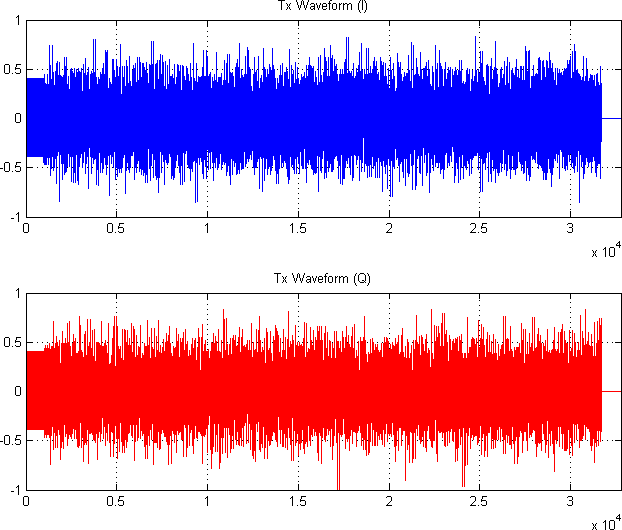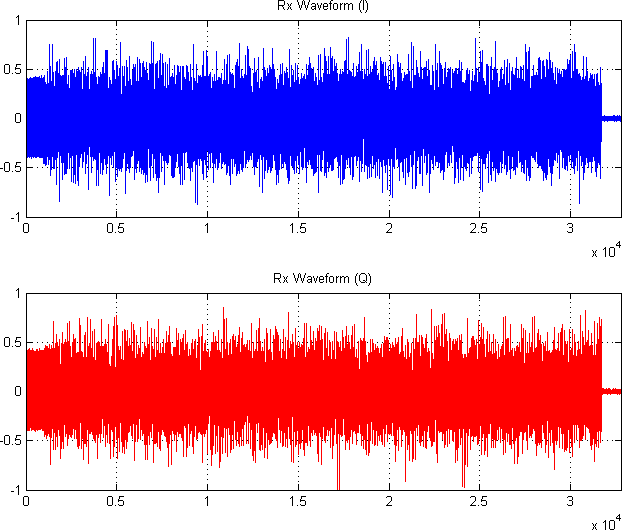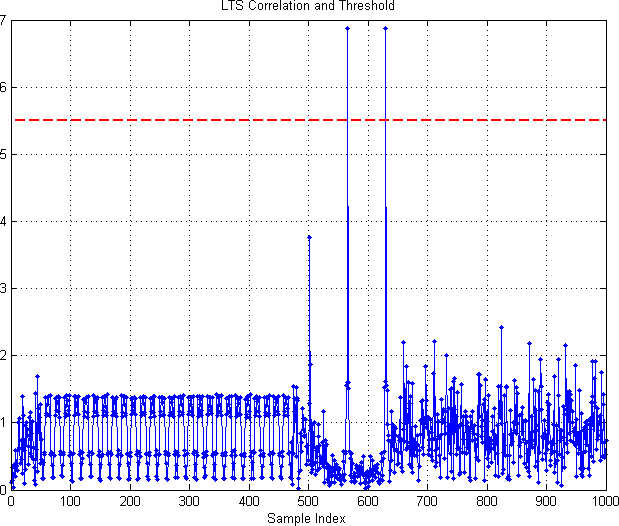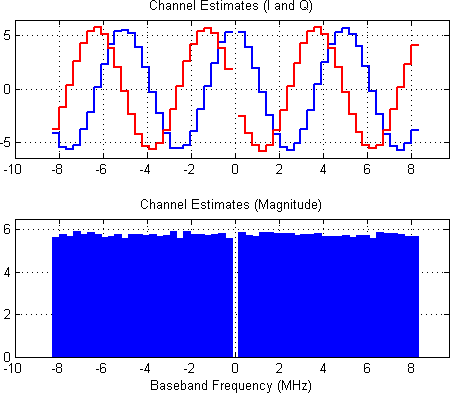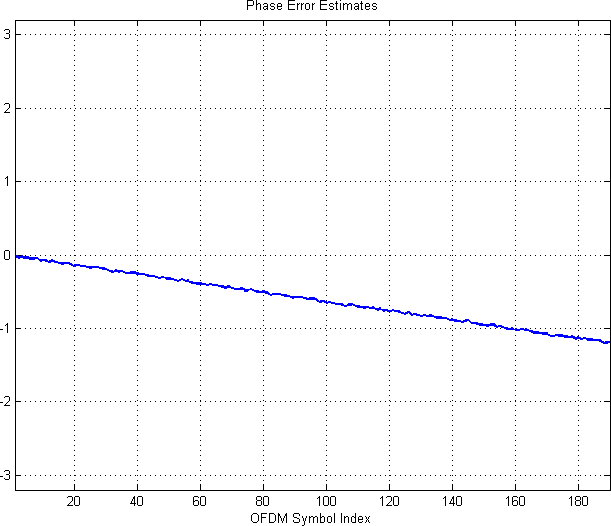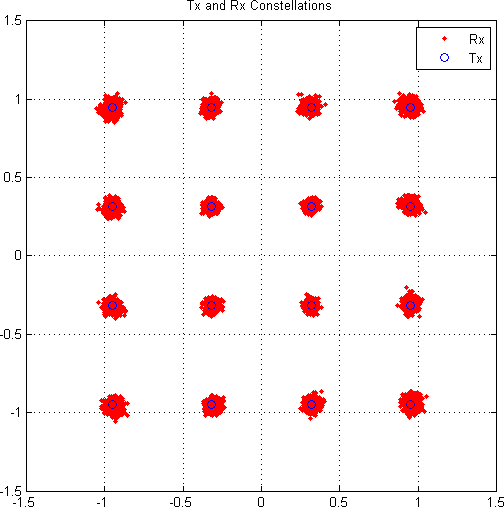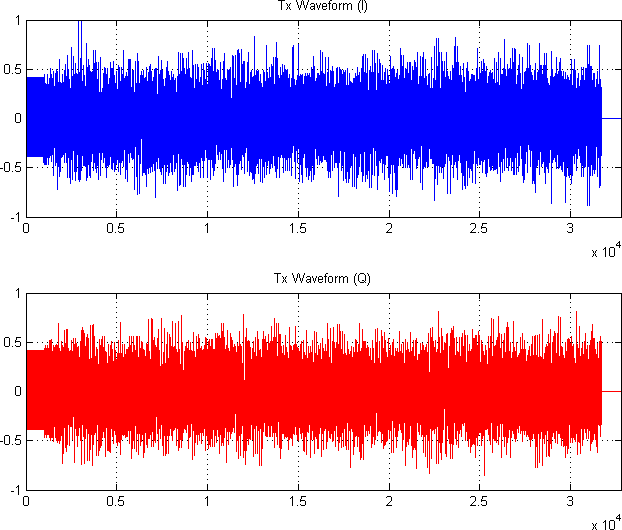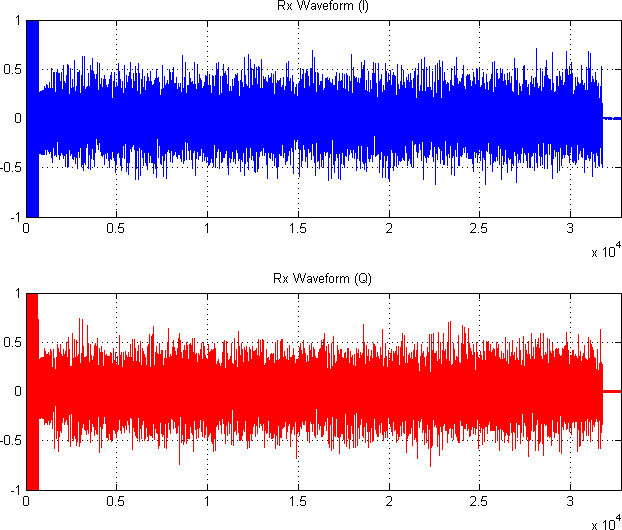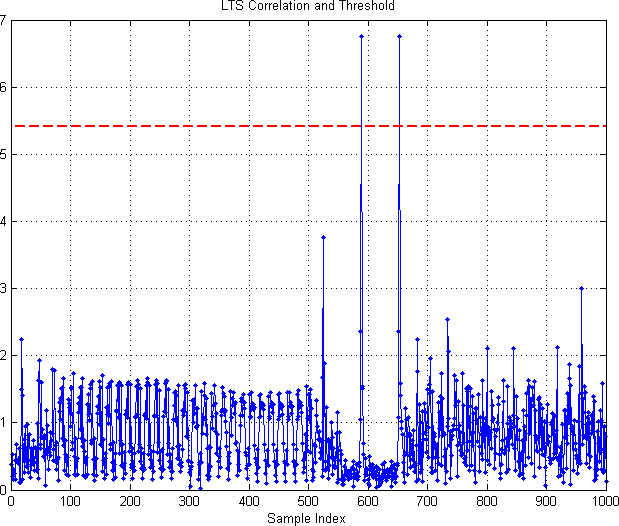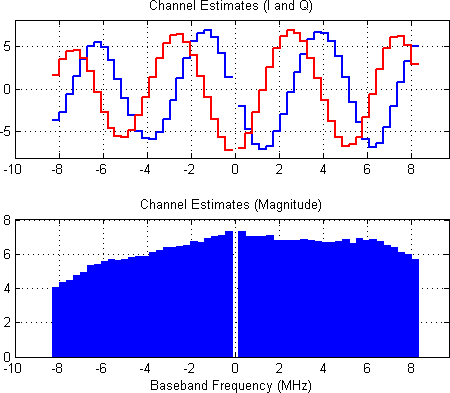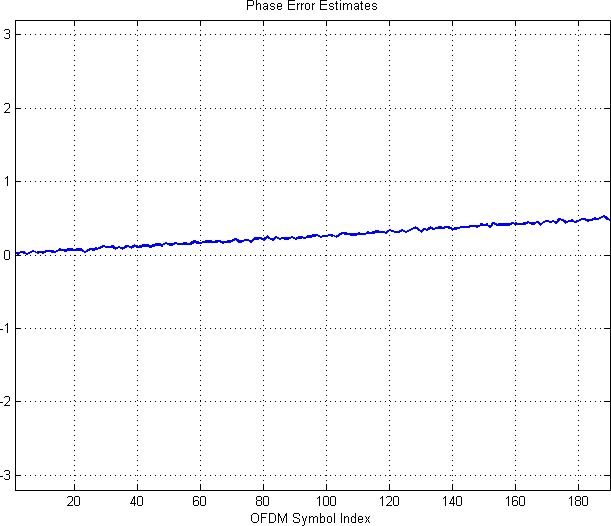| Version 10 (modified by murphpo, 10 years ago) (diff) |
|---|
WARPLab 7
- Downloads
Getting Started
- Sample Buffer Sizes
- Automatic Gain Control
- Examples
- Extending WARPLab
- Debugging Errors
- Porting Code
- Benchmarks
WARPLab 7 Framework
WARPLab 7 Reference Design
Reference Design Modules
- Node
Interface Group
Baseband
Transport
Trigger Manager
Hardware
WARPLab 7 Example: SISO OFDM
File: wl_example_siso_ofdm_txrx.m
This WARPLab example implements a simple OFDM transmitter and receiver. The script can run with or without WARP hardware in the loop and does not require any extra MATLAB toolboxes.
Important: this script is not intended as a tutorial of OFDM. If you're not already familiar with the basics of OFDM please start with one of the many good OFDM tutorials available online. You will need to know the basics of OFDM before understanding the Tx and Rx processing in this example.
Transmitter

The OFDM transmitter code implements the following functions:
- Random data generation
- Modulation of random data to complex constellation symbols
- Mapping of symbols to data-bearing subcarriers
- Insertion of pilot tones in pilot subcarriers
- Inverse fast Fourier transform (IFFT)
- Cyclic prefix insertion
- Preamble construction and insertion
- Interpolation by 2x
Receiver

The OFDM receiver code implements the following functions:
- LTS correlation for synchronization
- CFO estimation and correcting use time-domain estimation from LTS
- Cyclic prefix removal
- Fast Fourier transform (FFT)
- Channel estimation from frequency-domain LTS
- Residual phase error estimation from frequency-domain pilot tones
- Equalization of data-bearing subcarriers using channel estimates and phase error estimates
- Demodulation of complex symbols to data values
Running the Example
The WARPLab OFDM example can be used in simulation only mode and in hardware-in-the-loop mode.
Simulation
To use the example in simulation mode set the top-level param USE_WARPLAB_TXRX = 0;, then run the m-script. When the script finishes 6 plots will show:
By default the simulation script applies AWGN with an arbitrary fixed SNR. You can change the simulated propagation characteristics in the m-code. Search for AWGN and apply whatever Tx->Rx degradations you like.
For example to simulate a perfect (noiseless) link, set the noise power to zero:
rx_vec_air = tx_vec_air + 0*complex(randn(1,length(tx_vec_air)), randn(1,length(tx_vec_air)));
The script also prints statistics about the experiment to the MATLAB command prompt:
Results: Num Bytes: 4560 Sym Errors: 0 (of 9120 total symbols) Bit Errors: 0 (of 36480 total bits) EVM: 3.779% LTS CFO Est: -0.07 kHz
Hardware in the Loop
To use the example with WARP hardware you will need two WARP nodes each running WARPLab 7.3 (or later) and a WARPLab environment setup on your PC. Refer to the WARPLab Quick Start if you have not yet setup WARPLab.
To target WARP hardware set the top-level param USE_WARPLAB_TXRX = 1;, then run the m-script. When the script finishes 6 plots will show:
The script also prints statistics about the experiment to the MATLAB command prompt:
Results: Num Bytes: 4560 Sym Errors: 0 (of 9120 total symbols) Bit Errors: 0 (of 36480 total bits) EVM: 4.541% LTS CFO Est: 2.64 kHz
Limitations
This example is intended as a staring point for researchers wishing to use WARPLab to prototype a wireless communications link. This examples does not implement some some blocks common in deployed OFDM systems, such as scrambling, interleaving and error correcting coding. For an example of a real-time OFDM implementation that implements all of these subsystems, please see the PHY in the 802.11 Reference Design.
Attachments (28)
- wl_ofdm_plots_hw_rxIQ.png (21.5 KB) - added by murphpo 10 years ago.
- wl_ofdm_plots_hw_txIQ.png (21.1 KB) - added by murphpo 10 years ago.
- wl_ofdm_plots_hw_chanEst.png (13.6 KB) - added by murphpo 10 years ago.
- wl_ofdm_plots_hw_constellations.png (18.8 KB) - added by murphpo 10 years ago.
- wl_ofdm_plots_hw_ltsCorr.png (27.6 KB) - added by murphpo 10 years ago.
- wl_ofdm_plots_hw_phaseError.png (14.4 KB) - added by murphpo 10 years ago.
- wl_ofdm_plots_hw_rxIQ.2.png (21.0 KB) - added by murphpo 10 years ago.
- wl_ofdm_plots_hw_txIQ.2.png (21.1 KB) - added by murphpo 10 years ago.
- wl_ofdm_plots_sim_chanEst.png (13.0 KB) - added by murphpo 10 years ago.
- wl_ofdm_plots_sim_constellations.png (17.0 KB) - added by murphpo 10 years ago.
- wl_ofdm_plots_sim_ltsCorr.png (25.9 KB) - added by murphpo 10 years ago.
- wl_ofdm_plots_sim_phaseError.png (14.7 KB) - added by murphpo 10 years ago.
- wl_ofdm_plots_sim_rxIQ.png (21.4 KB) - added by murphpo 10 years ago.
- wl_ofdm_plots_sim_txIQ.png (21.1 KB) - added by murphpo 10 years ago.
- wl_ofdm_blkDiag_Rx.png (15.6 KB) - added by murphpo 10 years ago.
- wl_ofdm_blkDiag_Tx.png (9.7 KB) - added by murphpo 10 years ago.
- Cy_PEy_Sy_phaseError.png (16.2 KB) - added by chunter 9 years ago.
- Cy_PEy_Sy_evm.png (33.3 KB) - added by chunter 9 years ago.
- Cy_PEy_Sy_constellations.png (18.2 KB) - added by chunter 9 years ago.
- Cy_PEy_Sn_phaseError.png (10.4 KB) - added by chunter 9 years ago.
- Cy_PEy_Sn_evm.png (40.3 KB) - added by chunter 9 years ago.
- Cy_PEy_Sn_constellations.png (39.2 KB) - added by chunter 9 years ago.
- Cn_PEy_Sy_phaseError.png (16.9 KB) - added by chunter 9 years ago.
- Cn_PEy_Sy_evm.png (42.8 KB) - added by chunter 9 years ago.
- Cn_PEy_Sy_constellations.png (21.7 KB) - added by chunter 9 years ago.
- Cn_PEn_Sy_phaseError.png (14.1 KB) - added by chunter 9 years ago.
- Cn_PEn_Sy_evm.png (64.8 KB) - added by chunter 9 years ago.
- Cn_PEn_Sy_constellations.png (53.0 KB) - added by chunter 9 years ago.
Download all attachments as: .zip
